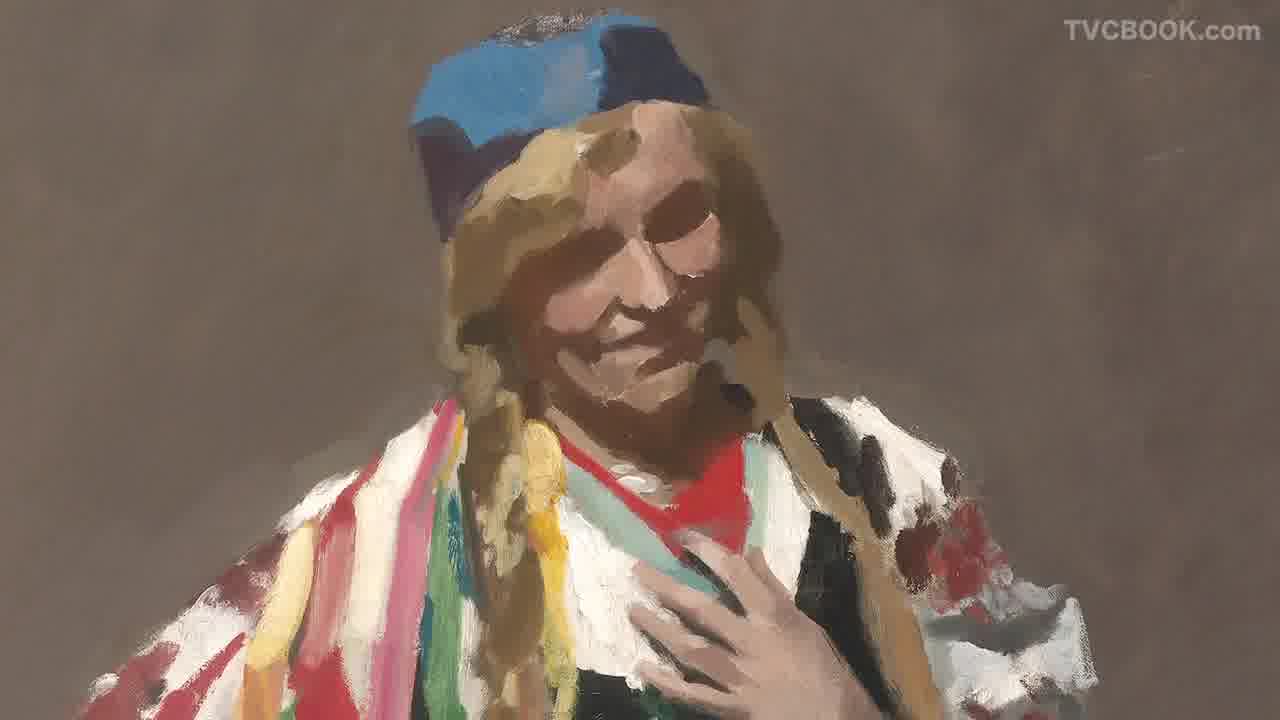Max Meldrum
'Poland (Madame de Tarczynska)' 1917
Purchased 1980
Jadwiga de Tarczynska (neé Kilbach) arrived in Australia in 1912, on holiday with her close friend, concert violinist Stanislaw de Tarczynski. Jadwiga and Stanislaw married in Melbourne in early 1913. The outbreak of the war prevented their return to Europe and reluctantly they exchanged their tourist visas to become immigrants.
The young couple quickly emerged as active members of the Melbourne arts and cultural community; Stanislaw performed in Melbourne theatres, Jadwiga took up language teaching, and their grand Mont Albert residence became a cultural hub.
In Poland (Madame de Tarczynska), Jadwiga is depicted in a costume from the Kraków region, its embroidered lace-up vest, long colourful ribbons, lace apron and cap later becoming the most recognised of all historical Polish costumes. She was dressed for one of many Polish Day celebrations the couple hosted at their home when Max Meldrum caught a glimpse of her. They had formed a close friendship with the outspoken Scottish-born artist, who was inspired to capture the vibrancy of her attire. Meldrum noted at the time that the portrait would have to be a sprint, an impression filled with nervous energy, as the ribbons might move at a second sitting. [1]
The human subject for Meldrum was less important than the act of painting. His broad, energetically applied brushstrokes quickly captured the light and shade of his subject, yet he paid minimal attention to facial expression. He produced a lively image with pure bright colours, contrary to his characteristically muted tonal palette, hoping it might silence criticism of his works as unfashionable and gloomy.
Meldrum came to Australia with his family in 1889, settling in Melbourne. After a long period of study and residence in Europe (1900--13) he returned to Australia, imbued with passion and ideas. He developed a theory of painting claiming it was a pure science of optical analysis. He believed tone (contrasting light and dark) to be the most important component of painting, and that it would provide the ultimate truth in representing nature. His Melbourne school of painting, established in 1917, soon proved popular but Meldrum attracted controversy throughout his career.
Madame de Tarczynska never owned the portrait. After being exhibited in Melbourne in 1922, the painting was displayed in the Meldrum family home until its acquisition by the National Gallery of Australia in 1980.
Miriam Kelly
[1] From a record of a conversation between Daniel Thomas and Meldrum's daughters, on the National Gallery of Australia artist's file, in which the daughters recalled their father's response at the time, NGA file 74/49/08.
Text © National Gallery of Australia, Canberra 2010
From: Anne Gray Australian portraits 1880--1960 National Gallery of Australia, Canberra, 2010

在T站说说你的看法~